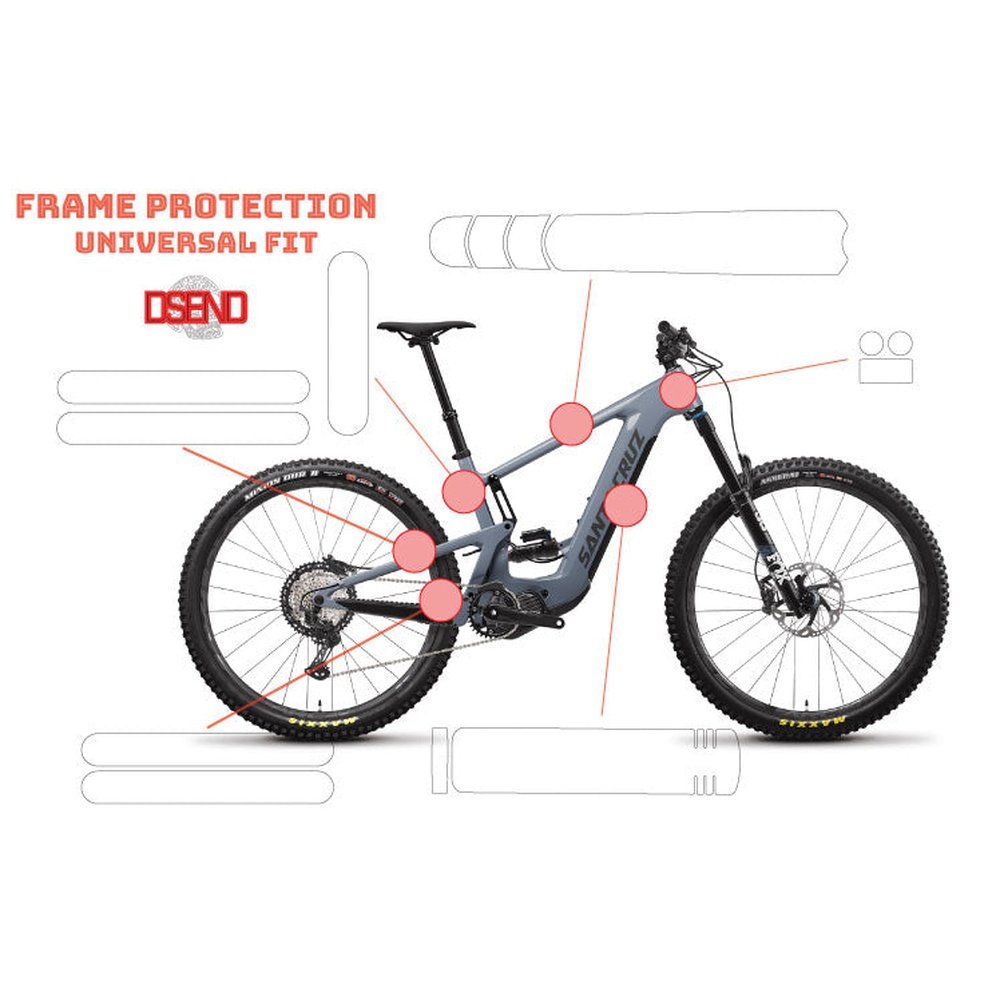What riders are looking for in mountain bike frame protection
For a sport (hobby, escape, obsession or whatever you want to call it), mountain biking can be harsh on the equipment used. There’s no nice way to punch through rocky sections, navigate chunky tree roots or launch into the air and land on rugged terrain. In order to minimize the risk of damage on their bikes, many riders look to frame protection to keep their bikes in good condition. In this blog post, we will explore what we found riders are looking for in quality mountain bike frame protection and how they weigh up the various options to suit their needs.
Before writing this blog post we did extensive online research on blogs, forums, articles, reviews, YouTube etc. We talked to numerous bike shops all over and riders on the trails and we found these to be the most common characteristics people are considering when looking to buy mountain bike frame protection.
Durability
Frame protection durability is high on the list for a lot of riders. As mentioned above, mountain bikes can take a beating and spend their lives in harsh, outdoor environments. Some products just don’t last. So what’s the opposite of durable? According to Google: flimsy, fragile, short-lived… anyways. Based on our research we broke down the most common reported issues with mountain bike frame protection in terms of durability. Basically, things that go wrong:
- Cracking on the edges. The material flakes and breaks up over time.
- Yellowing or that cloudy effect. UV light and temperatures play a part in this.
- Lifting on the edges and gradually getting worse. Once it starts, it spreads fast. Cheap adhesive is usually the culprit but it can also be caused by failing to clean the surface properly when installing.
- Easily damaged. Small knocks, drops and flying stones damage the frame protection easily. Usually because the material is thin and not fit for purpose.
Cost
Not everyone has stacks of cash to spend but if money is no object, do you just go for the most expensive product available? Cost can vary a lot from brand to brand and it makes you wonder: What makes one product different or more superior to another? Some are cheap and nasty (see issue list above plus some low grade adhesives). But mountain biking isn't something you want to cut corners on. No pun intended! Some frame protection products cover a lot of the frame, up to 95% but even these have gaps. Some just protect high impact areas where the most damage occurs. We found prices from US$10 - US$113 which is a big spread. In a lot of cases, you get what you pay for but some seem unnecessarily expensive for what some people refer to as ‘stickers’. This is why riders shop around and do some research. Maybe you ended up on this blog on your journey.
Coverage
There’s always the riders that like the ‘beat up’ look and don’t bother at all with frame protection. We’ve all got that 1 friend (or 2). Some like to wrap in heli-tape or similar budget rolls of protection film and just ‘get the job done’. Then there are the ones who would like every single part of their bike wrapped in some magic protection so they never get one bit of damage. Which is understandable. Mountain bikes are not cheap. Particularly carbon frames. Based on our research, we found most are happy with the high impact or obvious areas covered in frame protection. Probably because they take most and most obvious and visible knocks. There isn’t 1 product for everyone so it depends on the rider preference here.
Installation
Some frame protection products on the market can seem a bit daunting to install. Liquid soaps, lots of parts and sections cut into odd shapes that somehow come together in the end, after several hours of fiddling. Depending on a rider's DIY skill level, that kind of install is best left to pros or your local bike shop but they typically provide the most coverage. Along with the highest price tag. Then there is the simple install that most riders can do themselves in their garage or backyard. Or living room in some cases. Products for the DIY’ers that can be done in 30 minutes are usually more affordable, less pieces and simple to install. These types often cover the high impact areas and not full frame. Turns out, a lot of riders like to work on their bikes themselves so this is a popular option. Good instructions go a long way too!
Brand Support / Customer Service
When you buy a product you want to be assured that if you have any issues you can get them resolved quickly and fairly. Some products have no warranty and others guarantee for life so it pays to be careful when buying frame protection and know who you’re dealing with. Whether it’s a bike shop or an online store, a good returns policy is important because sometimes it just isn’t what you think it is. Most importantly, riders want someone they can call or email if they need support, an extra piece or if they have any other issues.
Style
While this is often lower on the list of priorities, some riders like to add some flair or show what they're interested in by putting designs on their bikes. We found most are looking for subtle or ‘non-existent looking’ frame protection. No big flashy logos or bright colors because their bikes already look great. And these days, in a competitive market with the amount of options out there, bikes look pretty freaking amazing already. But there’s lots of options and some cool designs available. If you sell your bike one day and the next person doesn’t like the design, they can just remove it.
Conclusion
Ultimately, finding the right mountain bike frame protection comes down to doing a little research, figuring out the level of coverage you need, how much you’re willing to spend with a trusted brand and whether you want to install it yourself. The key benefits with bike frame protection are protecting your investment by keeping your frame in good condition which makes your bike last longer and in turn maximizes your resale value if you choose to sell one day.










